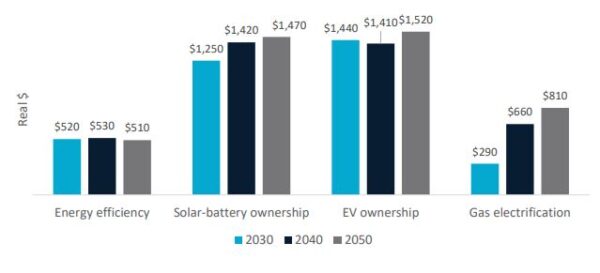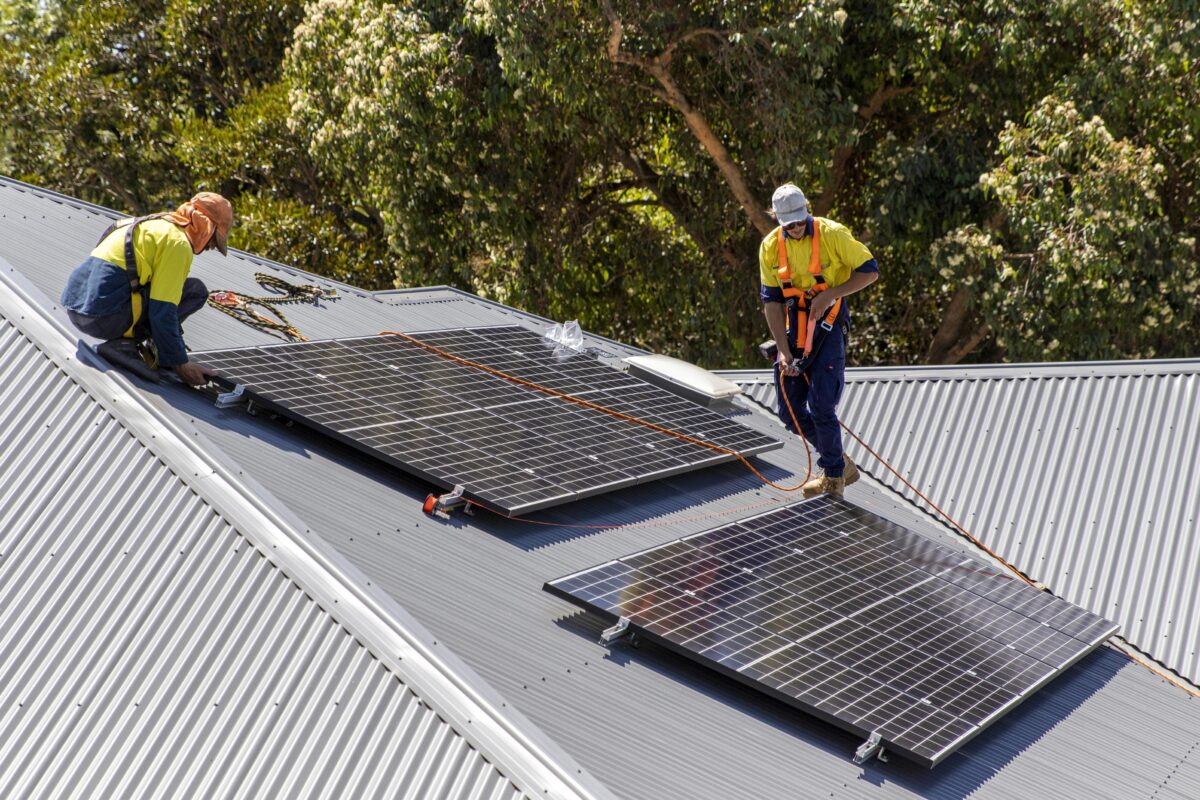A new report from Energy Consumers Australia (ECA) highlights that the households set to benefit the most from the transition from an energy mix dominated by fossil fuels to renewable energy will be those that electrify their heating, cooking and transport and have energy efficient homes while those who remain on fossil fuels will face escalating bills.
The Stepping Up report, based on modelling by the CSIRO and consultancy Dynamic Analysis, shows that by 2030 the average difference in total energy costs, including transport, between a typical fossil-fuelled home and an all-electric home in the National Electricity Market (NEM) will be about $2,250 (USD 1,470) per year. Households that install rooftop solar and a battery will make additional savings.
The ECA said by 2030, a fossil-fuelled household’s average annual fuel costs would be $11,110 while a household that quits gas appliances and switches to electric vehicles (EVs) would spend $8,860 per year. Installing solar and a battery would provide an additional $1,250 in annual savings. The report authors said the savings are annual averages over the 20-year lives of appliances, vehicles, solar panels and batteries installed in the years specified.
By 2050 the difference in annual energy expenditure between a fossil-fuelled household and an all-electric household is $2,850 per year plus an extra $1,470 in savings if rooftop solar and battery energy storage is installed.

Image: Energy Consumers Australia
While welcoming the projected financial benefits of electrification, ECA Interim Chief Executive Officer Jacqueline Crawshaw said the report highlights that some low-income households, renters and apartment dwellers may struggle to access these savings.
“Our research shows there are savings for consumers after they go all-electric, but there are costs and other barriers that make it difficult for some people to do so,” she said, adding that “households that face barriers to electrifying their homes need support.”
“We need to make sure that no-one is left behind in Australia’s energy future and that the last households to electrify are the ones that choose to wait, not those who couldn’t afford to,” she said.
The ECA is calling for a new national partnership of all three levels of government to coordinate the energy transition for consumers.
Crawshaw said support for households will require a combination of information to enable consumer choice and agency in deciding the electrification path that is right for them, and funding or financing options to help meet the upfront costs.
“There needs to be a clear national plan for households to go all-electric that gives people the information they need to make the transition, provides them with funding and support, and identifies the policy changes needed to ensure no one gets left behind in Australia’s energy future,” she said.
“Households make up nearly 25% of energy usage in Australia. The energy transition is not just about wind turbines and solar farms – it’s about cars, hot water systems and stovetops.”
This content is protected by copyright and may not be reused. If you want to cooperate with us and would like to reuse some of our content, please contact: editors@pv-magazine.com.









By submitting this form you agree to pv magazine using your data for the purposes of publishing your comment.
Your personal data will only be disclosed or otherwise transmitted to third parties for the purposes of spam filtering or if this is necessary for technical maintenance of the website. Any other transfer to third parties will not take place unless this is justified on the basis of applicable data protection regulations or if pv magazine is legally obliged to do so.
You may revoke this consent at any time with effect for the future, in which case your personal data will be deleted immediately. Otherwise, your data will be deleted if pv magazine has processed your request or the purpose of data storage is fulfilled.
Further information on data privacy can be found in our Data Protection Policy.